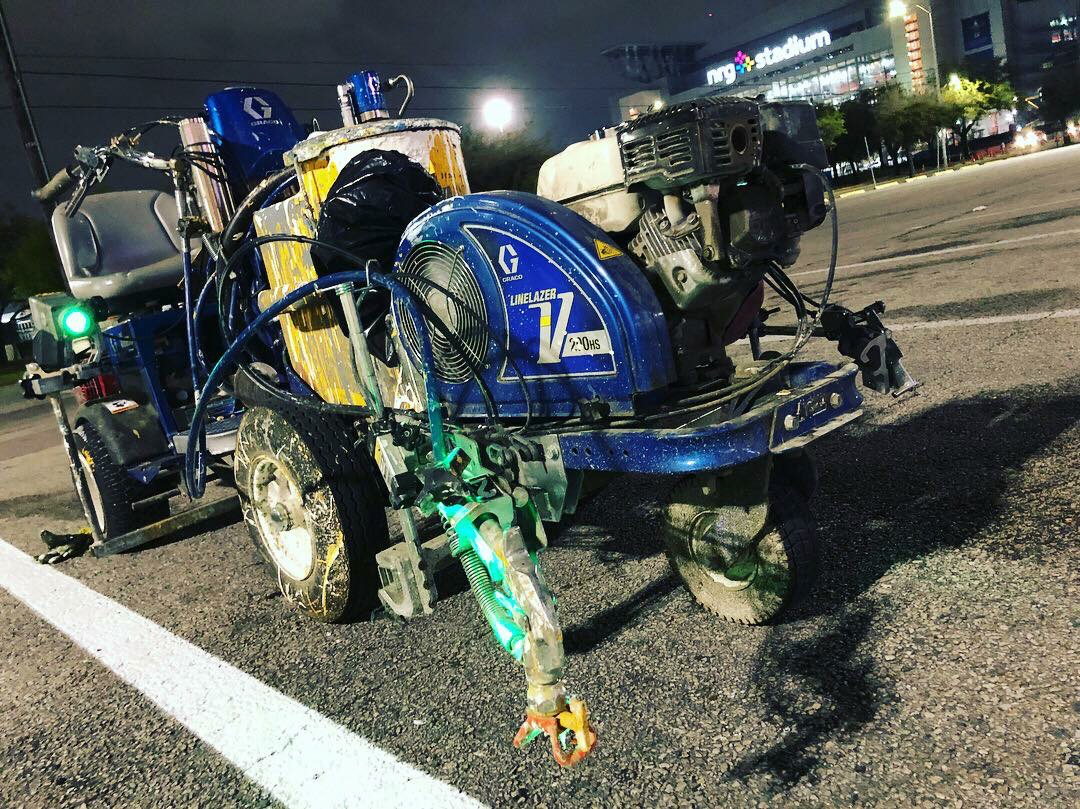
What Are Thermoplastics?
Thermoplastics are synthetic products that can be molded when heated to extreme temperatures. As they cool, they will harden and retain the shape in which they were molded. Once the heat is removed, the cooling process occurs rapidly. There are many different types of thermoplastics, and they have many diverse uses.
What Is Thermoplastic Striping?
Paving companies typically use the term to describe any thermoplastic marking that is applied as a straight line. Under this definition, thermoplastic striping can refer to the lines surrounding individual parking spaces, the lines down the center or along the edges of a roadway, the lines identifying access aisles next to accessible parking spaces, or any other type of pavement marking that is basically a straight line.
What Is a Thermoplastic Marking?
Pavement markings include crosswalks, traffic arrows, the international symbol for an accessible parking space, and other words or graphics that provide information to the people using the pavement. Thermoplastic markings can be used to replace painted pavement markings. Many of the standard markings are available as preformed thermoplastic pavement markings, but your paving maintenance contractor may also use templates to apply a bulk thermoplastic.
What Are the Advantages of Thermoplastic Markings and Striping?
When correctly applied, thermoplastics are thicker than paint, giving them superior longevity. Because thermoplastics are applied while they are extremely hot, they can form an exceptionally strong bond with the pavement. The thermoplastics used for paving applications typically contain highly reflective beads distributed throughout the material, making the markings more visible on wet pavements or in low-light conditions. Thermoplastic stripes and markings are practically impervious to impact damage and petrochemicals. Furthermore, because thermoplastics cool so rapidly, areas can be reopened to traffic in less time than is required for painted markings.
Do Paving Companies Need Special Equipment to Install Thermoplastic Pavement Markings and Striping?
Yes, contractors need to make a substantial investment in specialized equipment, including at least one pre-melting kettle, handliners for detailed work, and a selection of ribbon guns, extruders, and spray guns. However, it is also essential that contractors and their crews receive specialized training in thermoplastics’ proper application.
Does the Weather Affect the Contractor’s Ability to Apply Thermoplastics?
The pavement must have a temperature of at least 50 degrees Fahrenheit for most applications. However, since preformed markings are applied by heating the pavement, they may be used at lower temperatures. The pavement must be dry and clean, so thermoplastics cannot be applied in the rain, and it may not be advisable to apply them on a particularly windy day.
To Learn More About Thermoplastic Pavement Markings and Line Striping, Contact Marathon Solutions Group
All team members at Marathon Solutions Group are committed to providing every customer with incomparable craftsmanship and superlative service on each job. We offer an extensive range of paving services, including thermoplastic line striping and pavement markings, asphalt sealcoating, bollard and parking lot signage, concrete repairs, concrete installation, asphalt overlay and paving, parking lot striping, and asphalt milling. We handle jobs of all sizes for commercial clients in Harris County and the adjacent counties. Call 800-879-1147 to request your free quote, or you can use the online form to submit your request.


